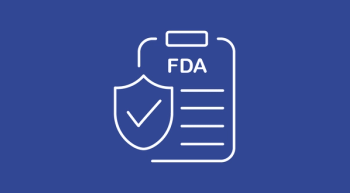
Irpagratinib/Atezolizumab Active in FGF19+ Advanced HCC
Irpagratinib plus atezolizumab showed durable responses and manageable safety in advanced HCC with FGF19 overexpression, regardless of prior ICI exposure.
The combination of irpagratinib (ABSK011) and atezolizumab (Tecentriq) led to deep, durable responses in patients with advanced hepatocellular carcinoma (HCC) and FGF19 overexpression, including those previously treated with immune checkpoint inhibitors, according to phase 2 data presented at the 2025 ESMO GI Congress.1
At a median follow-up of 7.1 months, among response-evaluable patients in the treatment-naive population (n = 12/15), the overall response rate (ORR) was 50.0%; best responses included partial response (PR; n = 6), stable disease (SD; n = 5), and progressive disease (PD; n = 1). The confirmed ORR was 33.3%. The median duration of response (DOR) was not reached (NR), the disease control rate (DCR) was 91.7%, and the median progression-free survival (PFS) was 7.0 months (95% CI, 2.8-not evaluable [NE]).
Among response-evaluable patients in the pretreated population (n = 17/18), the ORR was 52.9%; best responses included PR (n = 9), SD (n = 2), and PD (n = 5). The confirmed ORR was 41.2%. The median DOR was NR, the DCR was 70.6%, and the median PFS was 8.3 months (95% CI, 1.6-NE).
Overall survival (OS) data were immature. Six patients had died at the time of this analysis.
“Remarkable efficacy was observed, with an ORR of more than 50% and a median PFS of more than 7 months,” lead study author Qi Cheng, MD, stated in the presentation.
Cheng is a physician at the Hepatic Surgery Center of the Tongji Hospital, affiliated with the Tongji Medical College of the Huazhong University of Science and Technology in Wuhan, China.
Trial Background
Approximately 30% of patients with HCC have FGF19 overexpression, which is associated with poor prognosis. Previous research has indicated that the FGF19/FGFR4 signaling axis may be an effective therapeutic target for select patients with HCC.
Irpagratinib is a selective, oral FGFR4 inhibitor that has shown antitumor activity in HCC. Furthermore, atezolizumab plus bevacizumab (Avastin) is the FDA-approved standard of care for patients with previously untreated, unresectable HCC.
Study Design
ABSK-011-201 consisted of 2 parts. The dose-escalation part (part A) enrolled patients with advanced or unresectable HCC. Patients received atezolizumab at 1200 mg every 3 weeks plus escalating doses of irpagratinib at 180 mg daily (n = 6), 320 mg daily (n = 6), 160 mg twice daily (n = 8), or 220 mg twice daily (n = 33).
The dose-expansion part (part B) enrolled patients with advanced or unresectable HCC who had FGF19-overexpressing disease, were treatment naive or had received 1 prior line of systemic therapy, had an ECOG performance status of 0 or 1, and had Child-Pugh class A or B (score 5-7) disease.
The primary end point was ORR per RECIST 1.1 criteria. Secondary end points included DOR, DCR, PFS, OS, safety, and pharmacokinetics.
Previously Reported Findings
Initial safety, tolerability, and efficacy findings from the dose-escalation part were presented at the 2024 ESMO GI Congress. In this preliminary analysis, irpagratinib at 200 mg twice daily plus atezolizumab elicited an ORR of 50% among patients with FGF19 overexpression (n = 5/10).2 The efficacy and safety profiles were strong in patients with prior ICI exposure.
Baseline Characteristics
Cheng noted that the baseline characteristics among the 33 patients included in the total population were similar to those seen in other HCC study populations.1 However, most patients (84.8%) had HBV infection, and Child-Pugh scores of 5 (45.5%), 6 (48.5%), and 7 (6.1%) were reported. Additionally, the median sum of tumor lesions at baseline was 95 mm (range, 19-230) and was higher in the treatment-naive population (120 mm [95% CI, 20-230]) vs the pretreated population (88 mm [95% CI, 19-186]).
Safety Data and Next Steps
In the overall population (n = 33), any-grade and grade 3 or higher treatment-emergent adverse effects (TEAEs) were reported in 100% and 45.5% of patients, respectively. The most common TEAEs in this population were increased alanine aminotransferase (ALT) levels (any-grade, 81.8%; grade ≥ 3, 12.1%), increased aspartate aminotransferase (AST) levels (72.7%; 9.1%), diarrhea (57.6%; 3.0%), increased blood bilirubin levels (51.5%; 9.1%), hyperphosphatemia (36.4%; 0%), decreased platelet counts (30.3%; 3.0%), anemia (27.3%; 0%), hypoalbuminemia (15.2%; 0%), proteinuria (15.2%; 0%), decreased white blood cell (WBC) counts (15.2%; 6.1%), and cough (12.1%; 0%). Grade 4 TEAEs included increased blood creatinine levels (n = 1) and decreased lymphocyte counts/decreased lymphocyte percentages (n = 1).
In the treatment-naive population (n = 15), any-grade and grade 3 or higher TEAEs were reported in 100% and 53.3% of patients, respectively. The most common TEAEs in this population were increased ALT levels (any-grade, 80.0%; grade ≥ 3, 13.3%), increased AST levels (60.0%; 13.3%), diarrhea (60.0%; 0%), increased blood bilirubin levels (46.7%; 6.7%), hyperphosphatemia (40.0%; 0%), decreased platelet counts (40.0%; 6.7%), anemia (33.3%; 0%), hypoalbuminemia (26.7%; 0%), proteinuria (6.7%; 0%), decreased WBC counts (20.0%; 6.7%), and cough (13.3%; 0%).
In the pretreated population (n = 18), any-grade and grade 3 or higher TEAEs were reported in 100% and 38.9% of patients, respectively. The most common TEAEs in this population were increased ALT levels (any-grade, 83.3%; grade ≥ 3, 11.1%), increased AST levels (83.3%; 5.6%), diarrhea (55.6%; 5.6%), increased blood bilirubin levels (55.6%; 11.1%), hyperphosphatemia (33.3%; 0%), decreased platelet counts (22.2%; 0%), anemia (22.2%; 0%), hypoalbuminemia (5.6%; 0%), proteinuria (22.2%; 0%), decreased WBC counts (11.1%; 5.6%), and cough (11.1%; 0%).
In the total population, the most common grade 3 treatment-related AEs (TRAEs) were increased ALT levels (12.1%), decreased WBC counts (6.1%), increased blood alkaline phosphatase levels (6.1%), and increased blood creatinine levels (6.1%). No grade 4/5 TRAEs were reported, and no patients discontinued treatment due to a TRAE. No eye toxicities were observed. Furthermore, investigators reported no extra immune-related AEs compared with those seen in historic data with single-agent atezolizumab. Cheng noted that the hyperphosphatemia and diarrhea were mostly mild and manageable.
Based on these findings, Cheng explained that further irpagratinib development opportunities exist in both the pretreated and treatment-naive settings. For instance, irpagratinib plus an ICI could be an effective option for patients with HCC who have progressed on first-line ICI-based therapy. Moreover, in treatment-naive patients, the manageable safety profile of irpagratinib plus atezolizumab shows the potential feasibility of triplet regimens, such as irpagratinib combined with atezolizumab and bevacizumab. Cheng concluded by saying that clinical trials in these directions are being initiated.
References
- Cheng Q, Zhang Y, Wang J, et al. Irpagratinib (ABSK-011) plus atezolizumab in first-line (1L) and immune checkpoint inhibitors (ICIs) treated advanced hepatocellular carcinoma (HCC) with FGF19 overexpression (+): updated results of the phase II ABSK-011-201 study. Presented at: 2025 ESMO Gastrointestinal Cancers Congress. July 2-5, 2025. Barcelona, Spain. Abstract 149MO.
- 50% ORR: impressive clinical trial data for irpagratinib combined with atezolizumab in advanced hepatocellular carcinoma stuns ESMO-GI Congress. News release. Abbisko Therapeutics Co., Ltd. June 27, 2025. Accessed July 2, 2025. https://www.prnewswire.com/news-releases/50-orr-impressive-clinical-trial-data-for-irpagratinib-combined-with-atezolizumab-in-advanced-hepatocellular-carcinoma-stuns-esmo-gi-congress-302184300.html
Newsletter
Knowledge is power. Don’t miss the most recent breakthroughs in cancer care.

















































































